Tomb 46
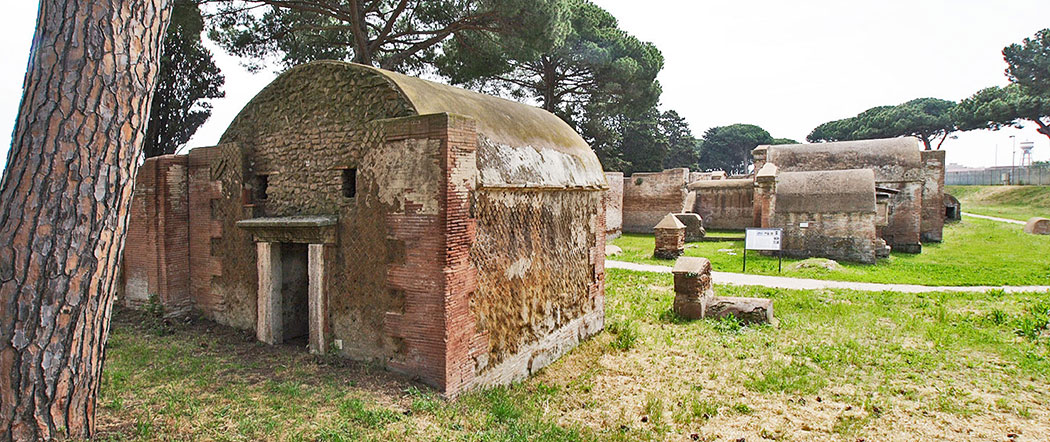

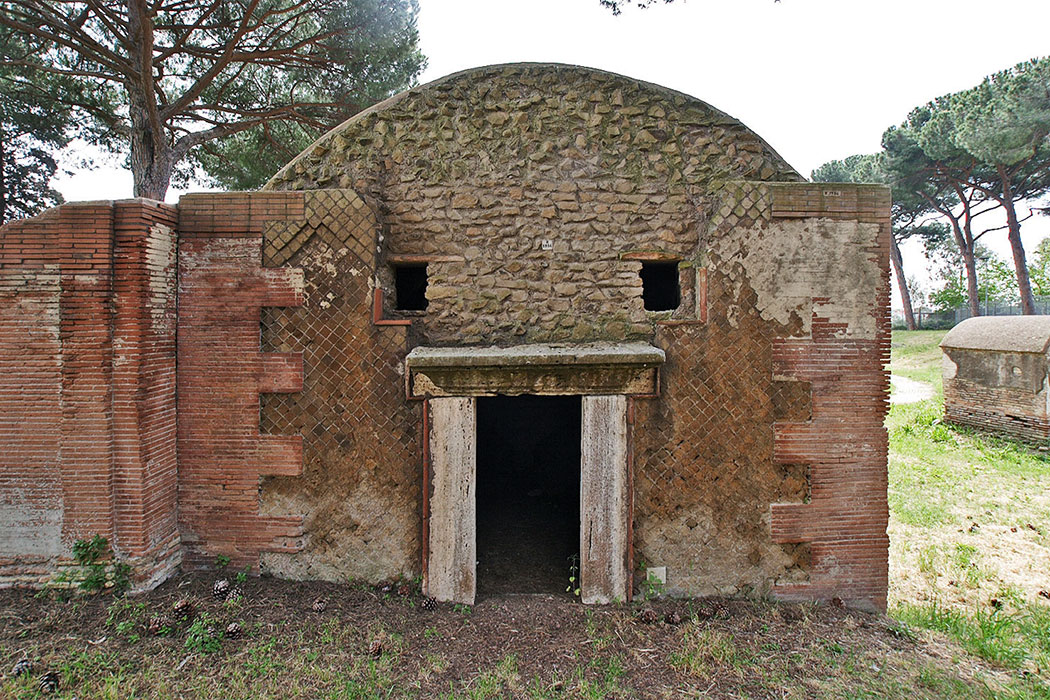
The walls of the burial chamber have been preserved up to the now disappeared ceiling.
The burial chamber was originally organized for cremation only. All the walls have large central niches surrounded by smaller ones. In the walls we find clues pointing to a reorganization of the grave. The large central niche of the back wall was covered later on by two brick arches with a support for a sarcophagus.
In the back wall are small windows. Several fragments of paintings show that the tomb once must have been decorated very nicely.
Below the no longer present mosaic floor, twelve formae for three bodies each were hidden.
There is evidence that tomb 46 has been built in the beginning of the second century AD, thus earlier than the surrounding tombs, and therefore must have been detached for a long time.
The reuse should not have taken place later than the beginning of the third century.
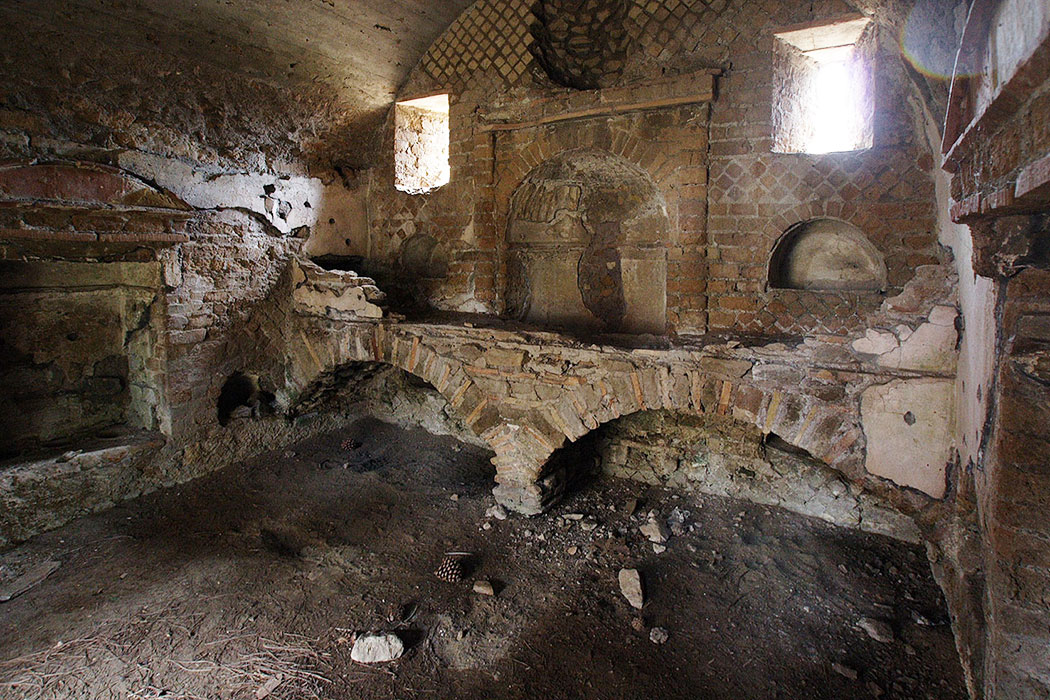
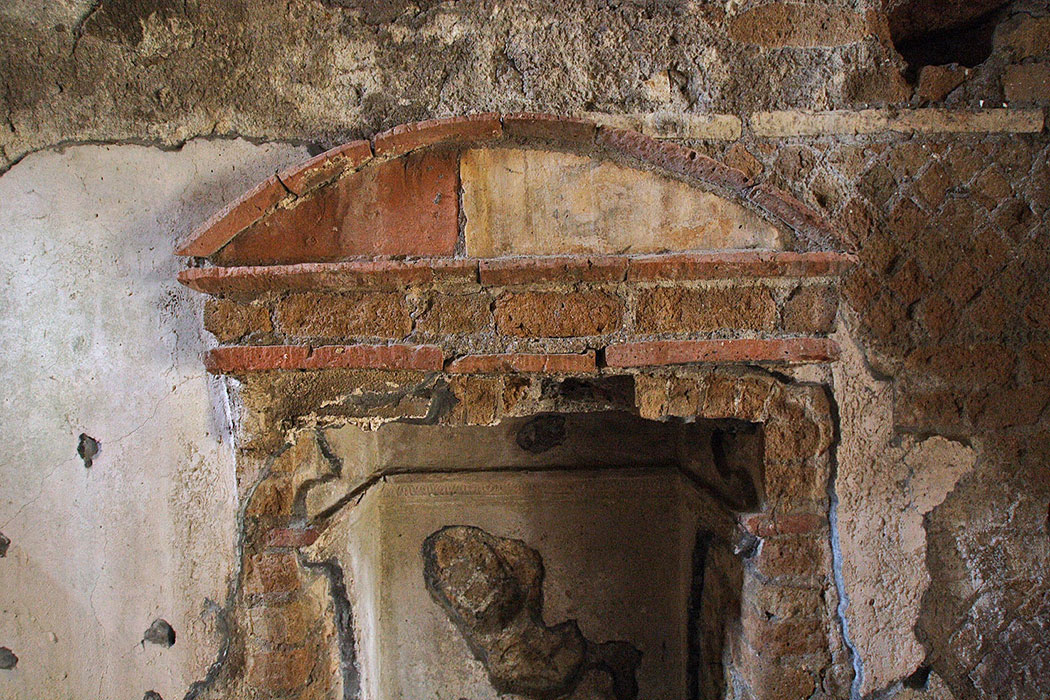
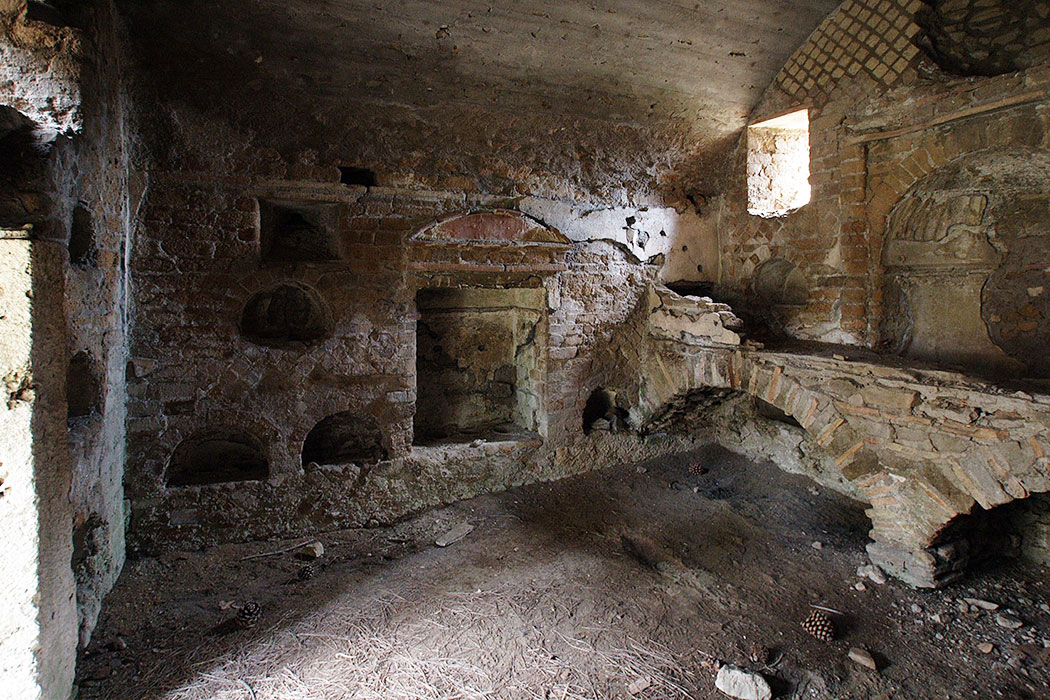
- Sources
- Russel Meigs - Roman Ostia, At the Clarendon Press 1973
- Guido Calza - Necropoli nell'Isola Sacra'(1940)
- Dr. Jan Theo Bakker.
- Hilding Thylander - Inscriptions du port d'Ostie (Lund C W K Gleerup 1952).
- Ida Baldassarre, Irene Bragantini, Chiara Morselli and Franc Taglietti - Necropoli di Porto, Isola Sacra (Roma 1996).
Waardeert u ons werk?
Wordt lid van Roman Ports en ontvang het boek of doe een donatie!
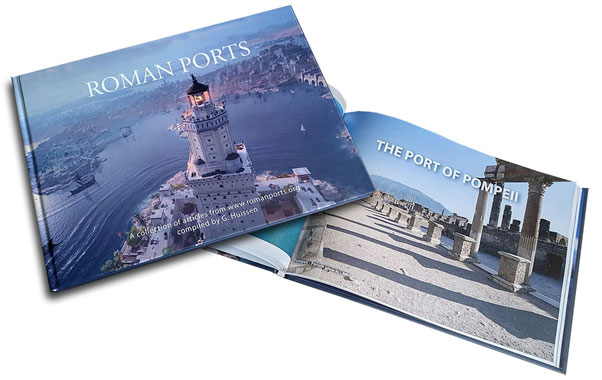 Wordt lid en steun ons
Wordt lid en steun ons
Isola Sacra Index (N)

Speciale sectie over de Romeinse begraafplaats van Portus (Engels)....
Lees meer...De teruggevonden vloot van Pisa

In 1998 werd bij toeval een ongelooflijk archeologisch erfgoed ontdekt in de buurt van het station Pisa San Rossore....
Lees meer...Leptiminus
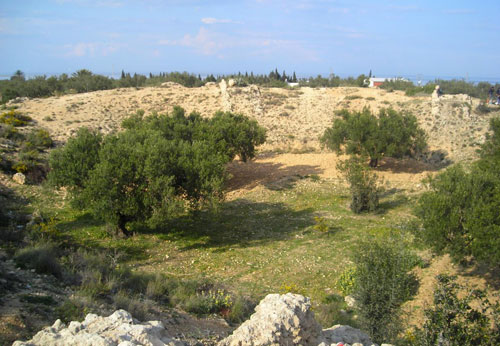
Op de plaats van het huidige Lamta aan de oostkust van Tunesië lag al in de oudheid een havenstad met de naam Leptis Minor ....
Lees meer...Romeins Zeehandelsrecht

Het Romeinse recht is het fraaiste monument dat Rome aan West-Europa heeft nagelaten....
Lees meer...Sullecthum (Salakta)

In de Sahel, in de Tunesische provincie Madhia vinden we aan zee het kleine stadje Salakta....
Lees meer...
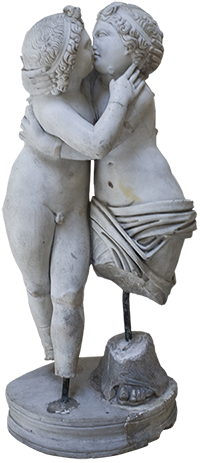 We are committed to providing versions of our articles and interviews in several languages, but our first language is English.
We are committed to providing versions of our articles and interviews in several languages, but our first language is English.